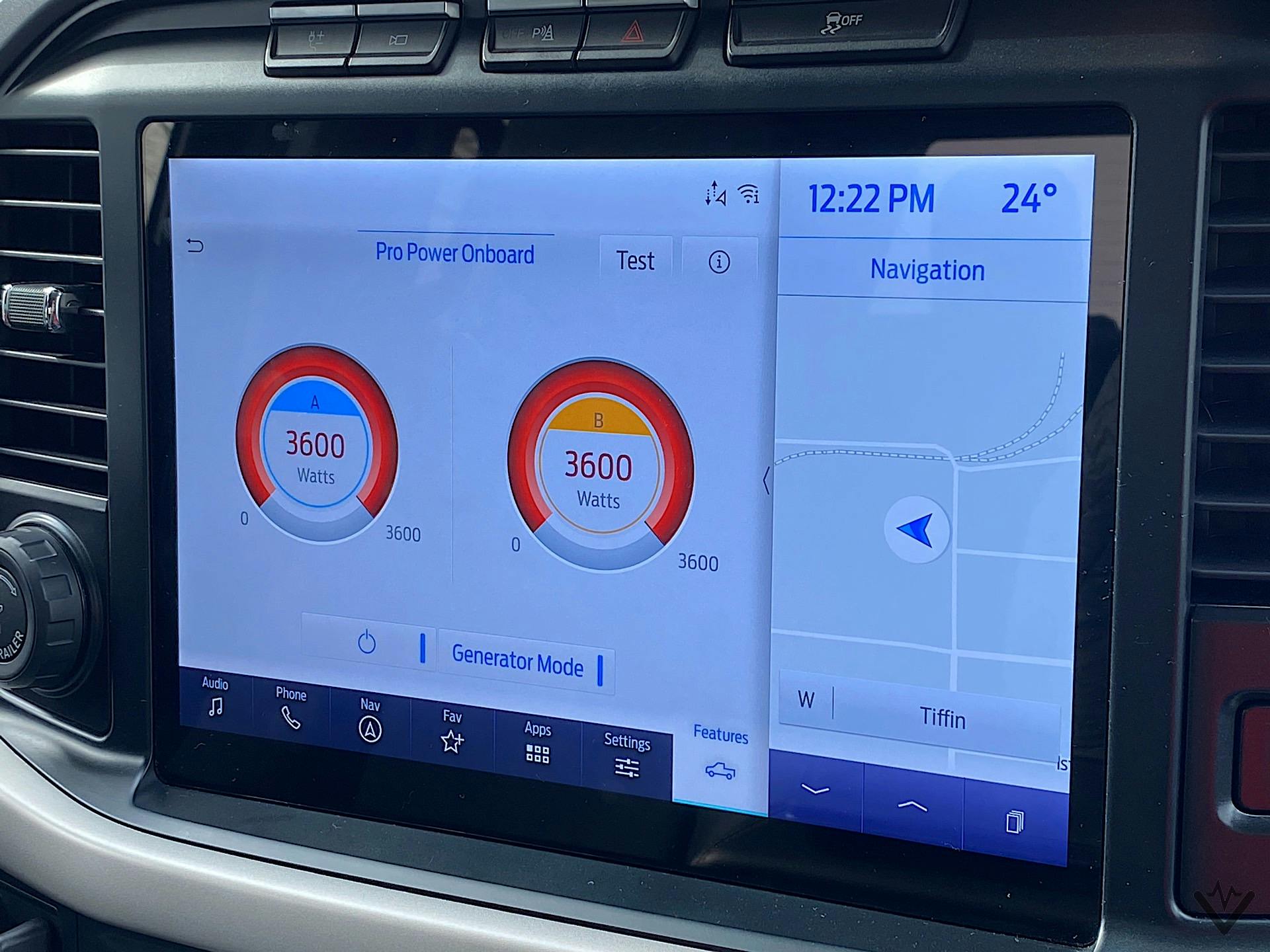An onboard generator on a pickup truck seems like an obvious feature. Until the release of the 2021 Ford F-150, however, such a feature didn’t exist. Touted as one of the main reasons to go with a Ford over the competition, the Pro Power Onboard generator can serve a variety of uses.
Some folks will use it for work. It can practically power an entire job site if necessary. Others will use it to go camping with. Yet others will use it for tailgating, hooking up a massive OLED flat-screen to watch the big game on in the parking lot.
If you have the hybrid truck, you already have the onboard generator. But for an inexpensive amount of money — $750 — you upgrade from a 2 kW generator to the massive 7.2 kW one.
For comparison, this 3,000 watt peak Honda generator, on sale, is nearly twice as much money. While yes, the truck itself is more expensive than the generator, it’s a heck of a deal if you’re buying the truck anyway.
Recently, we proved that you can charge an electric vehicle — our long-term Tesla Model 3 — with the onboard generator. One of the biggest questions we received after publishing that article is, “How much fuel did it use?”
Whether you’re using it for work or for play, fuel consumption on a generator matters. If the equipped on the F-150 uses way more than a portable generator, it might not be worth paying for it to be installed on the truck.
So we aimed to find out.
Our testing methodology
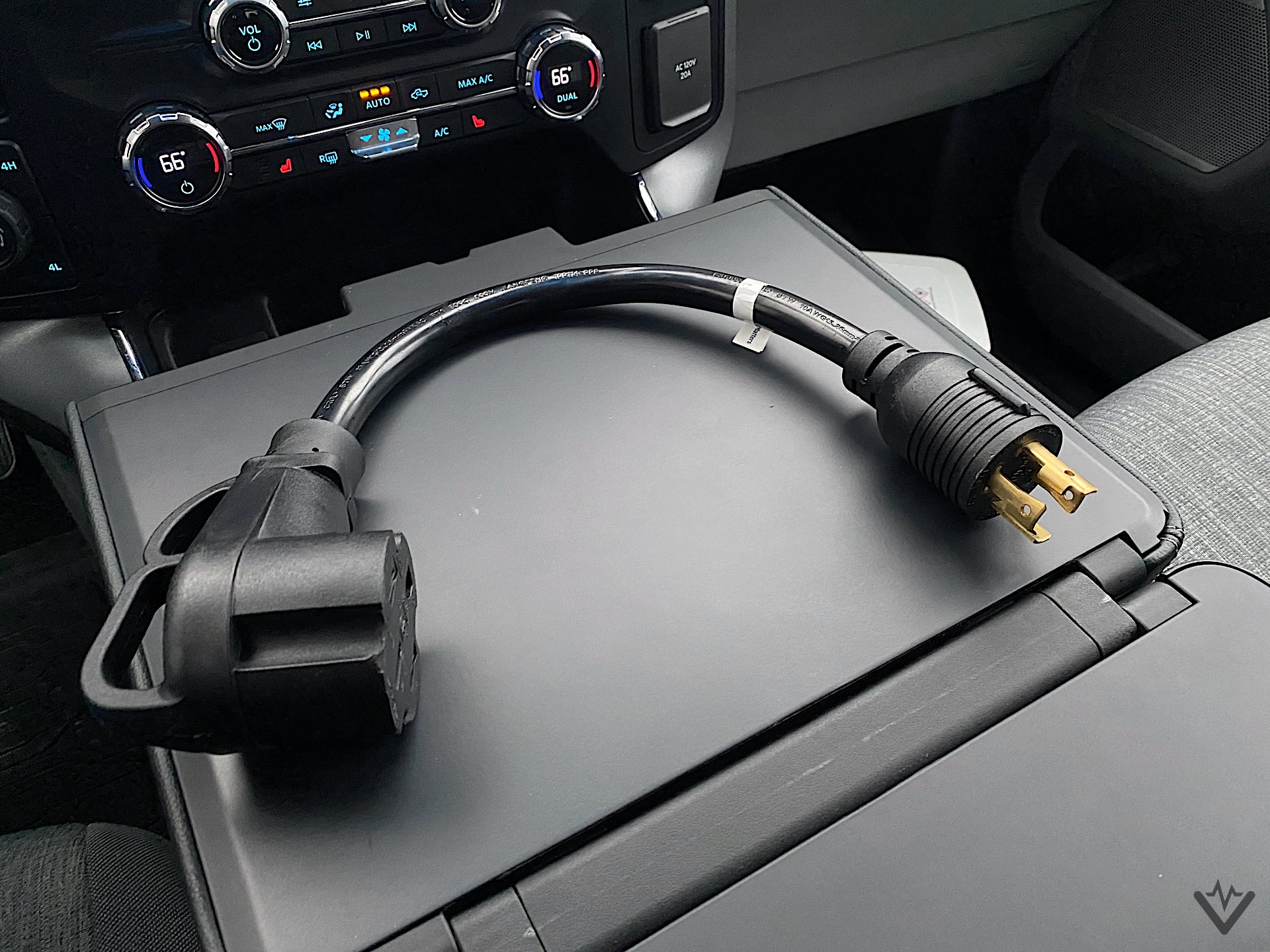
We don’t have an extensive science lab to run precise fuel calculations on our vehicles. So we decided to test for the “worst case scenario” of normal use.
Before starting the test, we drove the F-150 hybrid to make sure that the engine oil temperature and water temperature were at normal operating levels.
To calculate fuel usage, we would fill the truck up using the double click method. That means filling the truck until the pump clicks off once, letting the fuel settle, and then filling again until it clicks. We would perform this function at the beginning and the end of the test and use the pump to tell us how much fuel was used.
Because the gas station isn’t at our test site, there was approximately a half-mile drive each way. We had the truck in Eco mode for the drive — and the test — and was able to run most of the journey on electricity.
Unfortunately, the F-150 hybrid doesn’t have a dedicated EV button to force it to run on electricity, as it would’ve made the test more accurate. However, we don’t believe a significant amount of fuel was wasted in this journey.
We then decided that we would test the peak rate of the generator. That means if you max it out for a long period of time, this is how much fuel it’ll use. So if you’re running some occasional equipment camping, your fuel consumption will be less.
Also, the ambient air temperature was between 25 and 30 degrees Fahrenheit. Why so cold? Well, it’s because it’s cold in Ohio in January. But also people do camp in the winter, so it’s not an odd occurrence.
We ran the truck in generator mode for the duration of the test, and didn’t have the climate control or any function on in the truck. Nothing should’ve been needlessly consuming fuel.
Finally, we needed something draw a consistent amount of power from the generator for a decent amount of time.
So we hooked up our Tesla Model 3 at 50% charge. With that, we knew we could charge at 30 amps and 240 volts. That way we’d have consistent power usage without tripping the breaker, and hopefully we wouldn’t see many dips in the peak power output.
We would charge the Tesla to 90% and then check the results.
Running the test
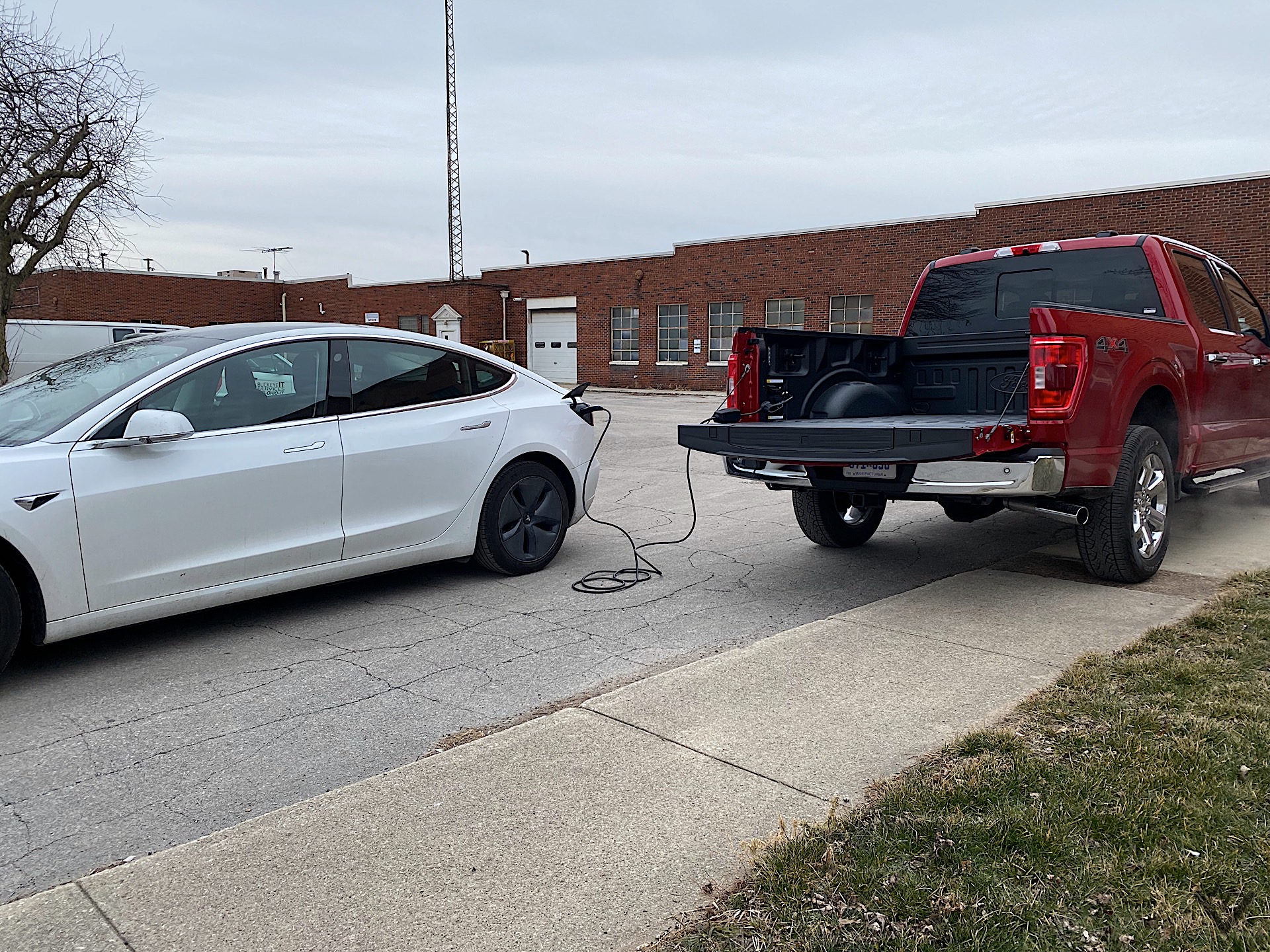
After plugging in the Tesla Model 3 to begin charging, we started a timer. We would, according to the display, need a bit less than 3 hours to charge the car. That should be enough time to get the results we needed.
The F-150 whirred up to 1,000 rpm, the peak revs for peak generator output. The onboard display showed a full 7.2 kW of power being used.
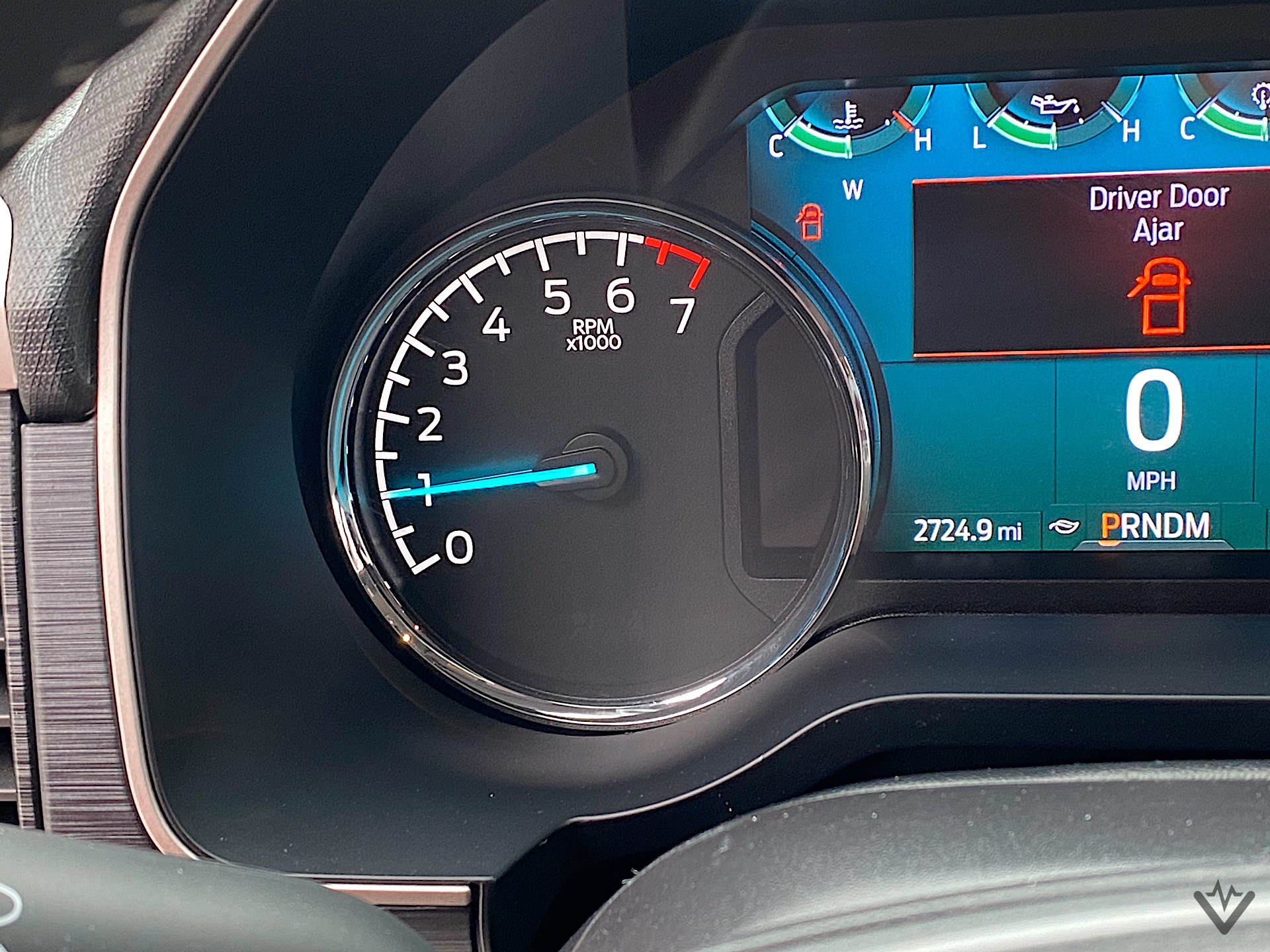
The Tesla onboard display showed just a hair under 240 volts and 30 amps. According to the Tesla app TeslaFi, we were averaging around 30 miles per hour back into the battery pack.
Surprises during the test
Even for the duration of the test, the revs of the truck never exceeded 1,000 rpm. That means that the truck, with the stock exhaust, is quiet. It’s significantly quieter than running a portable generator.
The 7.2 kW output on the Pro Power Onboard might be the listed peak power, but it’s also the sustained power. Many generators list a sustained and a peak output. This Ford charged at peak for the entire duration of the test. That’s hugely impressive.
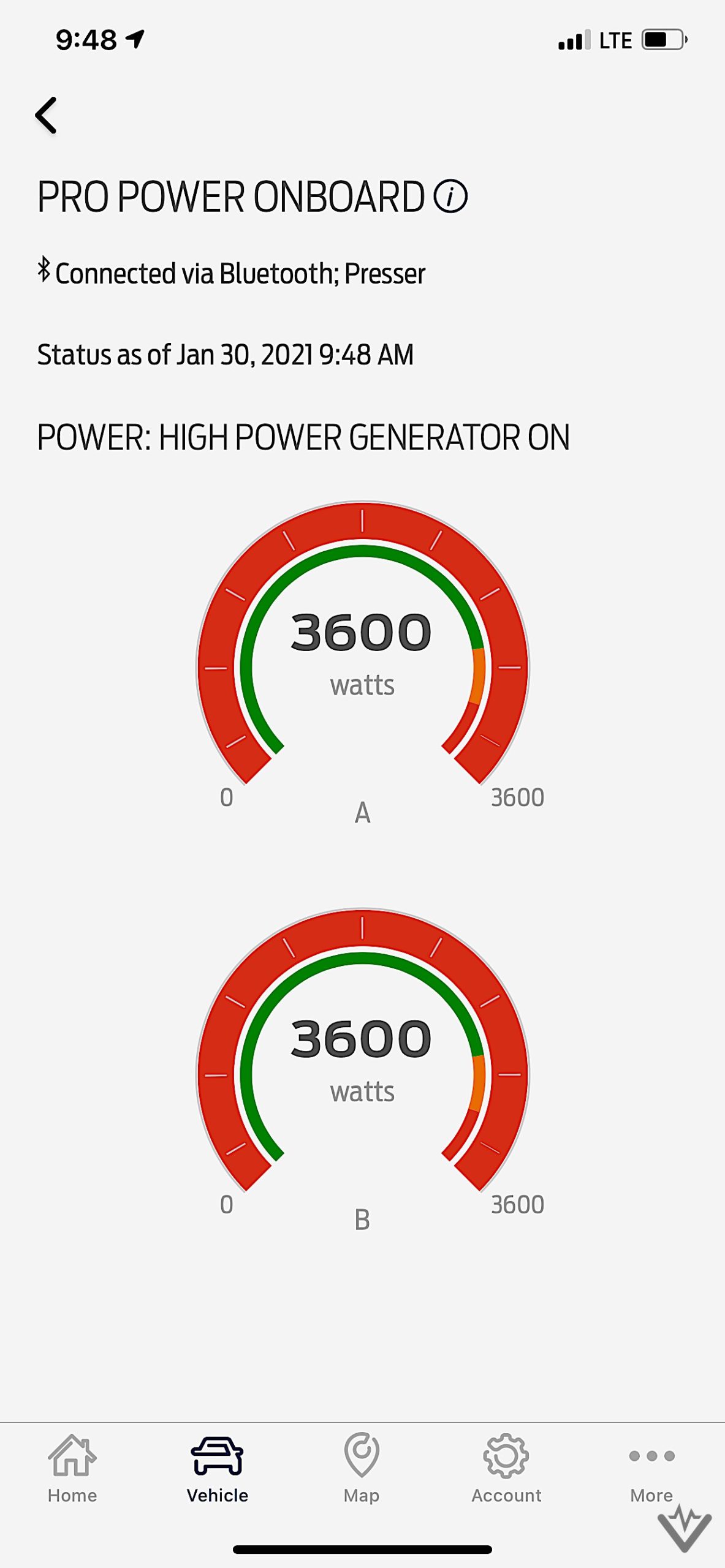
Finally, being able to monitor the power output through the FordPass app is helpful in making sure I could stay inside, and warm, while the vehicles were outside doing their thing.
Results of the test
The total charge time was 2 hours and 54 minutes. According to TeslaFi, the average amperage was 30, meaning it never dipped. Average voltage was 236.07 and it peaked at 270 volts. This truck is providing solid, clean power.
TeslaFi said that 19.68 kW of electricity was added to the battery.

After topping off the fuel tank again using the double click method, we ended up putting 3.133 gallons of fuel back into the truck.
That makes our fuel consumption under generator usage at approximately 1.07 gallons per hour of use. That means with a 30.6 gallon fuel tank, which is what comes with the hybrid, you can run the generator for about 28.5 hours.
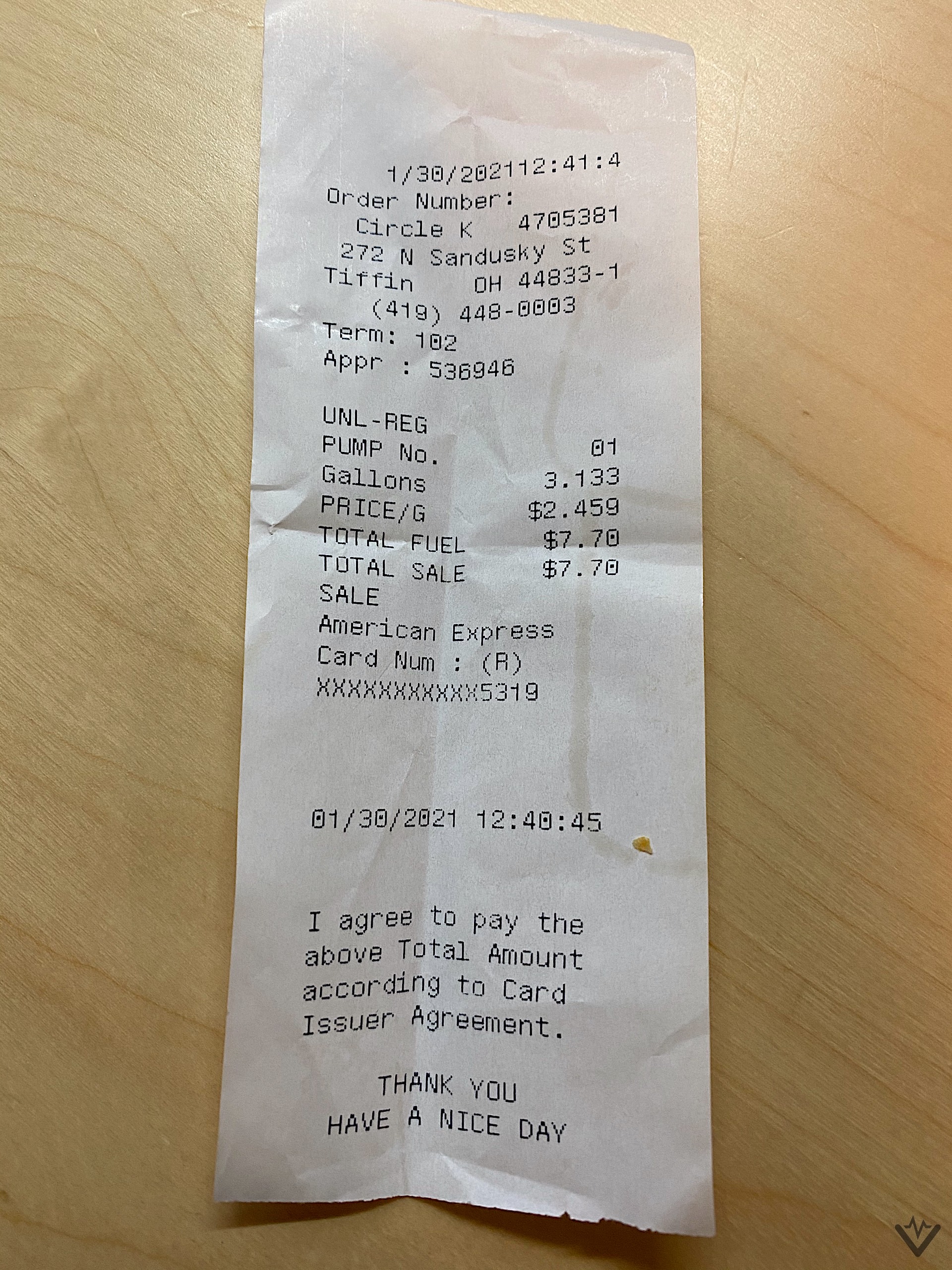
For comparison, the closest Honda generator with sustained output to the Ford is only a 5,500 watt unit, and uses 0.97 gallons per hour of operation. Generac sells a generator closer, but they only rate fuel economy at half the output of the generator, not the sustained or peak output.
That Honda generator we just referenced? It carries a M.S.R.P. of $3,189.
For those who are specifically curious about the charging of an EV, TeslaFi reported that 93.4 miles were added to the car. This number is an estimate, though. It can vary depending on ambient temperature, battery pack temperature, driving habits, and more. That being said, under this testing scenario, 30.00 miles were added per gallon of gasoline consumed.
What about the 2022 F-150 Lightning?

Recently, Ford pulled the covers off the all-electric F-150 Lightning. That truck comes with Pro Power Onboard as standard, and can be upgraded to an incredible 9.6 kW output. Ford claims that under normal use, you could power a house for 3 days with that output and the battery of the truck.
Ford also claims that if you ration the power, your house can stay up and running for 10 days. Considering the power issues that we’ve had in the United States — especially Texas — as of late, it’s probably nice to have.
Now how does that affect fuel consumption? Obviously electricity in and electricity out is different than powering a gasoline engine, but there will be some energy loss in the entire process. When we have a chance to test the F-150 Lightning at home, with our own testing equipment, we’ll be able to give you a better idea of how quickly it’ll charge, how much energy it uses per hour, and so on.
CHECK OUT: Small business owners should consider the F-150 Lightning Pro extended-range for their business
Additionally, Ford is going to sell a wall charger for the Lightning and Lightning Pro that supports the truck’s bidirectional power. That’s how it’ll be able to power a house, like we’ve mentioned before. It’s completely seamless in the transition, as well, as it consists of all of the switching components needed (and that you would need to install if you were just hooking up a standard household or business power generator).
Also, it is always worth nothing that a pure EV still gets power from the power grid, and in some parts of the country that power is made by coal. While the F-150 hybrid’s Pro Power Onboard and ultimately the F-150 Lightning’s Pro Power Onboard are significantly better for the environment than a traditional gasoline generator, there is still some environmental impact.
Conclusions
Yes, it’s cheaper to just buy a new generator than a pickup truck with a generator. But if you’re looking to buy a truck, and you’re interested in tailgating, powering a campsite, or running a job site with no easily available, power, you might want to consider the F-150 hybrid.
There are some generators that are CARB legal, but we’d still be willing to bet dollars to doughnuts that the exhaust coming out of the F-150 is cleaner than the exhaust coming out of most portable generators.
Also, there’s no maintenance, as far as we can tell, with the Ford generator. Sure, there’s truck maintenance, but that seems to be it.
It runs quiet, it’s powerful, and it’s super reliable with the power output. It’s a no brainer option, if you ask us.
Recent Updates
Updated (01:39 pm EDT, 06/04/2021): Added information about the Ford F-150 Lighting, its onboard generator, and associated power output information.
Updated (10:36 am EST, 2/1/2021): Added miles added to the Tesla Model 3 per gallon of fuel burned by the Ford F-150, for those who might be interested. Results will vary.
